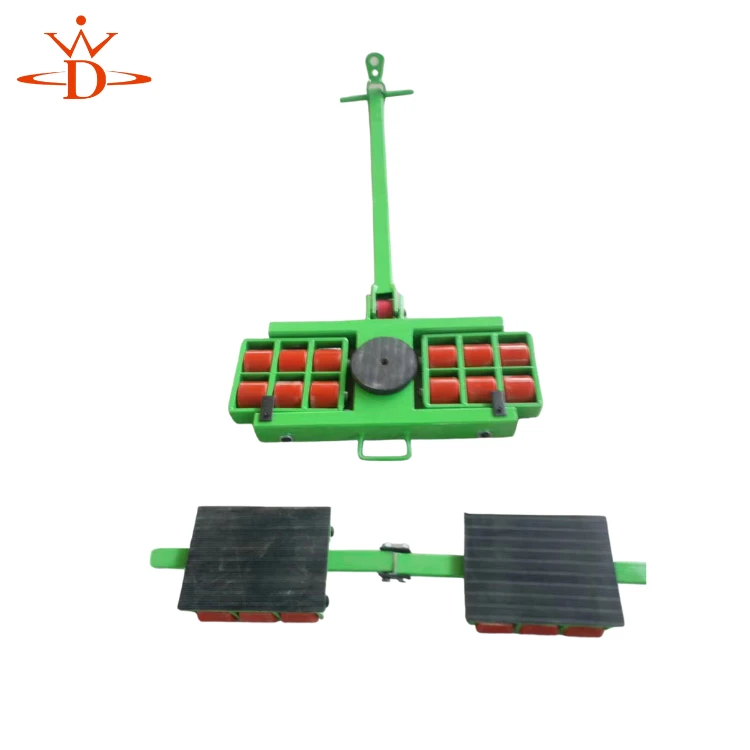portal crane
Understanding Portal Cranes Their Functionality and Importance
Portal cranes, also known as gantry cranes, are one of the most vital pieces of equipment in the industrial and construction sectors. Their design and functionality allow for heavy lifting and transportation of goods and materials across various operational environments. This article will explore the fundamental aspects of portal cranes, including their structure, operational principles, applications, and significance in modern industries.
Structure and Design
Portal cranes are characterized by a bridge-like structure that spans between two legs, which are often mounted on wheels or rails. This design allows them to traverse large areas, making them exceptionally useful for tasks such as loading and unloading shipping containers at ports, handling materials in factories, or assisting in large construction projects. The crane's bridge can be made of either steel or aluminum, ensuring both durability and stability when lifting heavy loads.
The main components of a portal crane include the hoist, which is responsible for lifting and lowering the load, and the trolley, which moves along the bridge to position the load precisely where it is needed. The crane may be operated manually or through an electric control system, providing flexibility and efficiency in operations.
Operational Principles
Portal cranes operate on the principles of mechanics and leverage. The hoisting mechanism utilizes pulleys and gears to lift heavy objects, reducing the amount of force needed from the operator. Operators can precisely control the movement of the crane to transport loads horizontally and vertically, allowing for safe and efficient material handling.
In industrial settings, portal cranes are frequently equipped with advanced technologies, such as automation systems and remote controls, which enhance their precision, speed, and safety. These innovations have made it easier for operators to handle complex tasks without the risk of injury or material damage.
portal crane

Applications of Portal Cranes
The versatility of portal cranes contributes significantly to their widespread use across various industries. In shipping and logistics, port and container terminal operators rely on gantry cranes to efficiently load and unload cargo ships. The ability to move heavy containers quickly and accurately can significantly reduce turnaround times at ports.
In construction, portal cranes are invaluable for moving structural materials such as steel beams, concrete blocks, and pre-fabricated units. Their capacity to reach considerable heights and span large areas allows construction teams to complete projects more efficiently and safely. Additionally, in manufacturing facilities, portal cranes are utilized for assembly line processes and inventory management.
Furthermore, the mining industry deploys portal cranes to handle heavy equipment and materials. Their robust construction and functionality enable them to operate in challenging environments, including those with limited space.
Significance in Modern Industries
The significance of portal cranes in modern industries cannot be overstated. They enhance productivity, reduce labor costs, and improve overall safety in material handling tasks. The ability to move goods swiftly and efficiently is crucial in maintaining a competitive edge in today’s fast-paced market.
Additionally, the integration of automation and smart technology into portal crane systems has paved the way for increased operational efficiency and reduced human error. These advancements contribute to a safer working environment while optimizing resource use.
In conclusion, portal cranes play a crucial role in various industries by facilitating safe and efficient material handling. Their design, versatility, and operational effectiveness make them an indispensable asset in construction, shipping, manufacturing, and mining. As technology continues to evolve, the potential for further enhancements in portal crane capabilities remains vast, promising even greater efficiency and safety in the future.
-
Dawei Hand Pallet Truck 1200mm, 2000–5000 KGS Heavy-DutyNewsNov.17,2025
-
Dawei Hand Pallet Truck, Fork Length 1200mm, 2000–5000kgNewsNov.17,2025
-
Large Equipment Movers – Safe, Insured & On-Time ServiceNewsNov.17,2025
-
Machine Moving Dollies | Heavy-Duty, Low-Profile, SafeNewsNov.17,2025
-
Permanent Lifting Magnet - Heavy-Duty, Safe, Quick ReleaseNewsNov.11,2025
-
PML 1000 Lifting Magnet - Heavy-Duty, Safe, No PowerNewsNov.11,2025
-
Large Equipment Movers: Safe, Fast, Certified ProsNewsNov.11,2025
